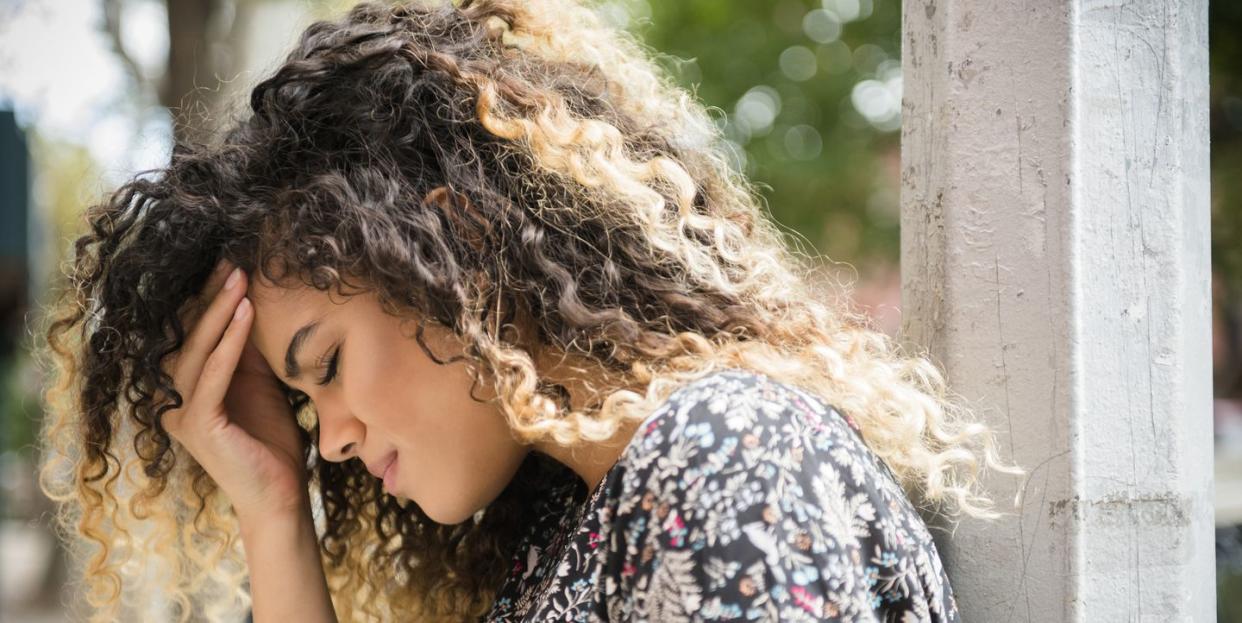Does Botox for Migraines Really Work? We Asked the Experts

If you’ve ever suffered from a migraine, you know how incapacitating these types of headaches can be. And if you get them often, you know it’s impossible to function, work or interact with family when you’re in pain. But you absolutely shouldn’t suffer in silence. “Every minute or hour in pain matters,” says neurologist and headache specialist Nina Riggins, M.D., Ph.D., director of the Headache and Traumatic Brain Injury Center at UC San Diego Health. “It’s a great era in headache medicine because we have many different medications, including Botox for migraines, to help people to have as little restriction from their activities as possible.”
Many different preventive medications may be recommended for people with frequent migraine. Botox, or onabotulinumtoxinA, was approved by the FDA in 2010 , though it’s not considered a first-line choice. “We usually try oral medications, such as topiramate, beta blockers, and tricyclic antidepressants first,” says Barbara Jo McGarry, M.D., associate professor at Rutgers Robert Wood Johnson Medical School. “But Botox is an option for some individuals.”
Here’s what else you need to know about Botox as a migraine treatment:
Who should get Botox for migraine headache?
If you have been diagnosed with migraine, talk to your doctor about all potential treatments, including Botox. “There’s actually a strict definition of ‘chronic migraine,’ and who should receive onabotulinumtoxinA for headaches,” says Chia-Chun Chiang, MD, assistant professor of neurology and headache specialist at Mayo Clinic. “You must experience 15 or more days per month with migraine headache lasting more than 4 hours per day for more than three months.” It’s not recommended for patients with fewer than 15 headaches per month, and in fact, studies show that it’s not effective for occasional migraine.
Botox also may be a better choice for those who can’t take other migraine medications due to potential drug interactions, other underlying health conditions, or side effects caused by oral medicine. For example, topiramate may cause tingling in the fingers, or some people may feel fatigued or lightheaded when on betablockers, says McGarry. Typically, insurance won’t cover Botox for migraine prevention unless it’s medically necessary or you’ve tried and failed to receive relief from two to three other preventive medications.
How does Botox work?
It’s not completely understood yet, but it’s believed that Botox blocks the release of chemicals involved in pain transmission and may also have anti-inflammatory properties, says Dr. Riggins. It actually was an incidental discovery: When people who received Botox for wrinkles got injections, they had fewer migraine headaches, so researchers investigated its effectiveness specifically for migraine.
What is Botox treatment like?
“There’s a very specific protocol for migraine prevention,” says Dr. Chiang. Treatment with Botox includes a series of 31 injections, given in the forehead, shoulders and upper back, with a small needle that feels like a pinprick. Some people find it tolerable, while others say it’s very uncomfortable. The procedure takes about 10 minutes with an experienced medical provider, and injections are approved to be given every three months. Injections should be given by a neurologist or headache specialist.
Side effects are minimal but may include neck pain, a worsening of headache the first few days after injection, and temporary eyelid droopiness, which usually goes away after three months. “But if you have side effects, you should communicate with your provider because we can modify the location of the injections the next time,” says Dr. Chiang.
The injections are not sedating, so you can drive yourself home. You also should avoid getting chemical hair treatments, such as hair color, for about a week afterwards. “It’s not that it’s dangerous, but no one has studied the chemical interactions, and we want you to get the most out of the treatment,” says Dr. Riggins. And, finally, because you’re probably wondering: No, it won’t change your appearance. The injections for migraine are a different protocol from those used for wrinkles.

Does Botox work for migraine headaches?
“Based on clinical studies and clinical experience, there’s a 50 percent reduction of headache days,” says Dr. Chiang. “Like any medication, it may take time to work. We suggest that you try three cycles of injections before giving up, though some people will experience relief after the first round.” Some people also benefit from combining oral medications along with injections and incorporating lifestyle changes, such as getting sufficient sleep.
While nothing is effective for everyone, headache specialists say that many people do experience fewer or less severe headaches with onabotulinumtoxinA injections. “We recommend a headache diary so we can review results with you after the treatments to evaluate how helpful they are,” says Dr. Riggins. “We want to work together to figure out what is best for you.”
You Might Also Like

